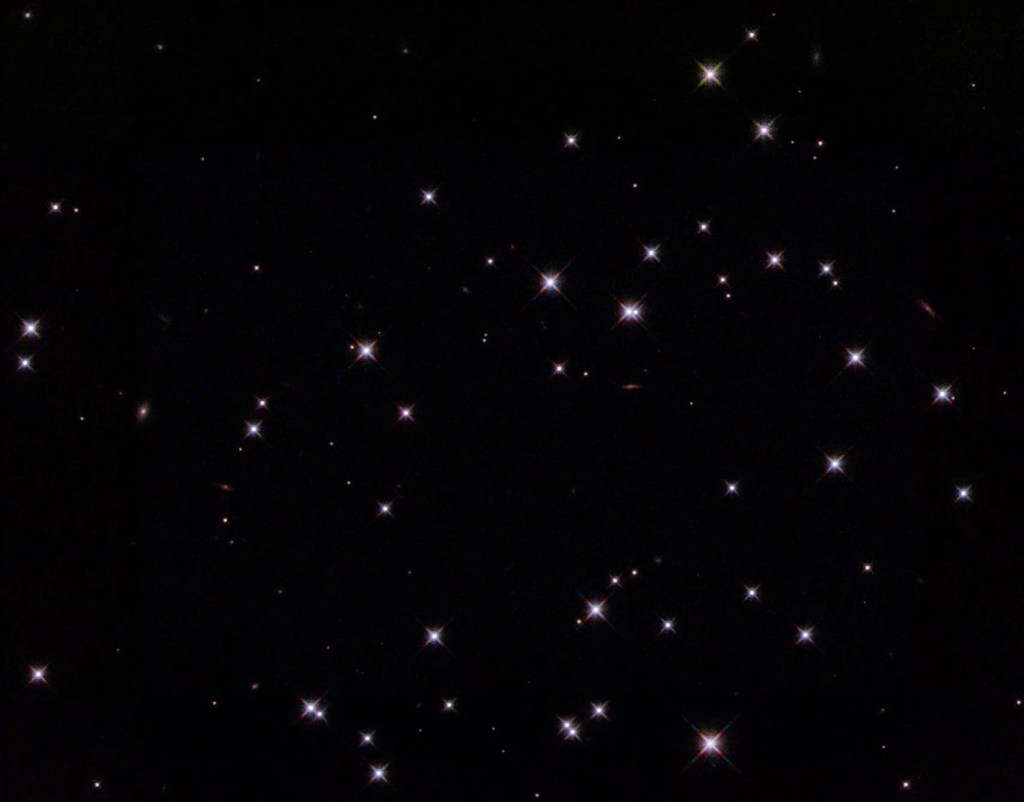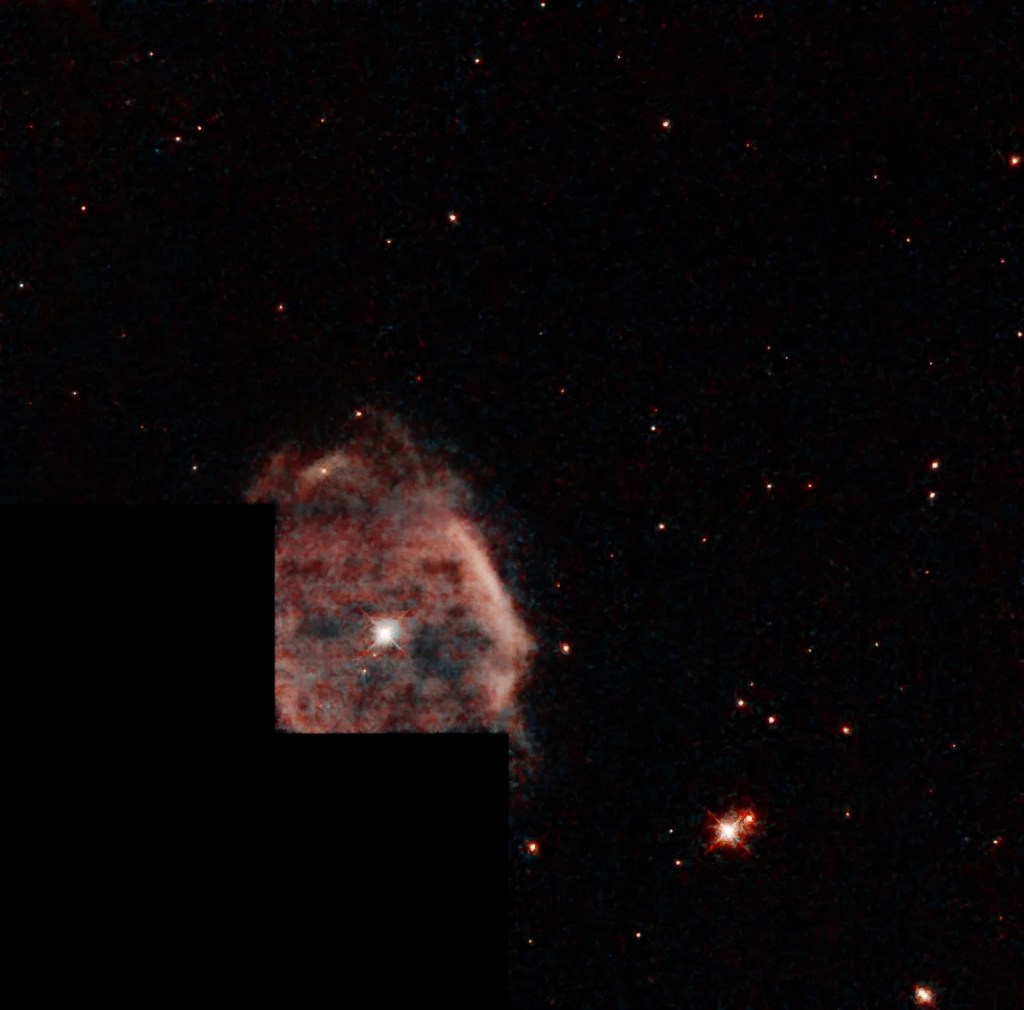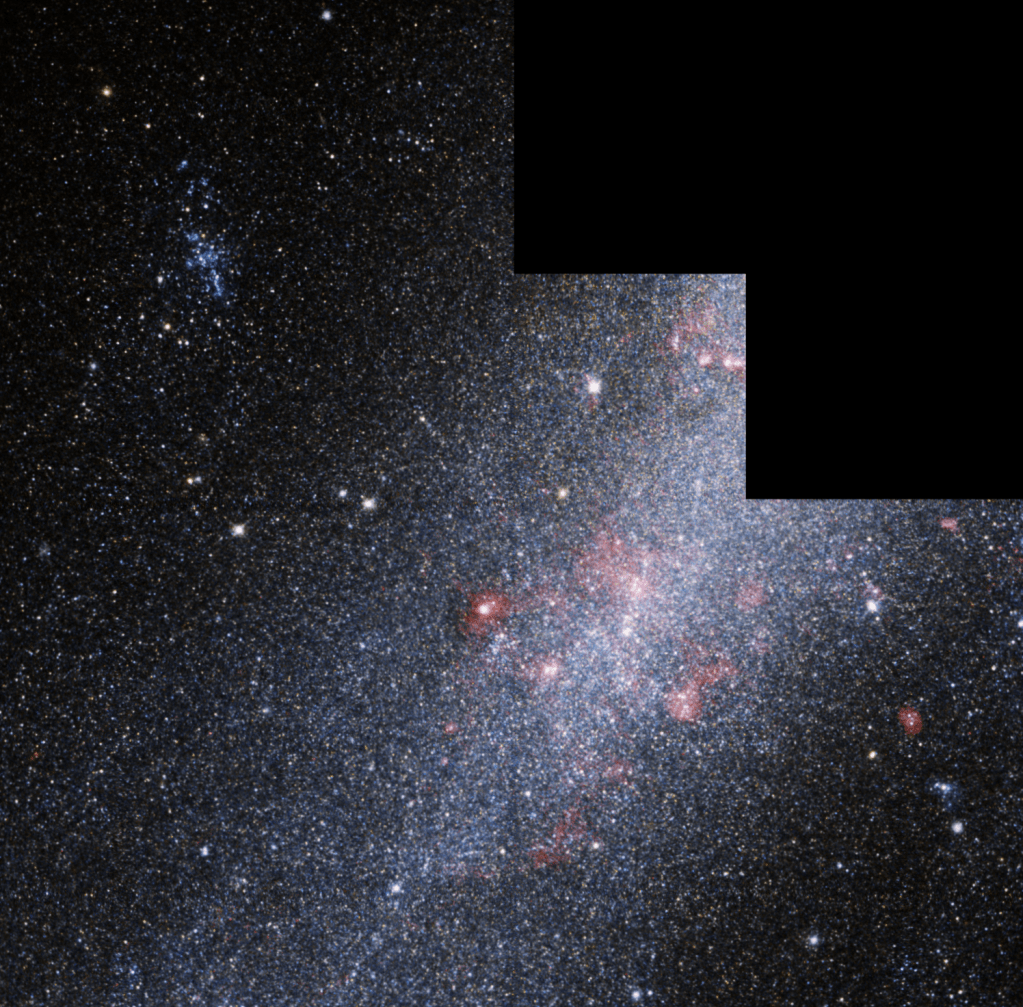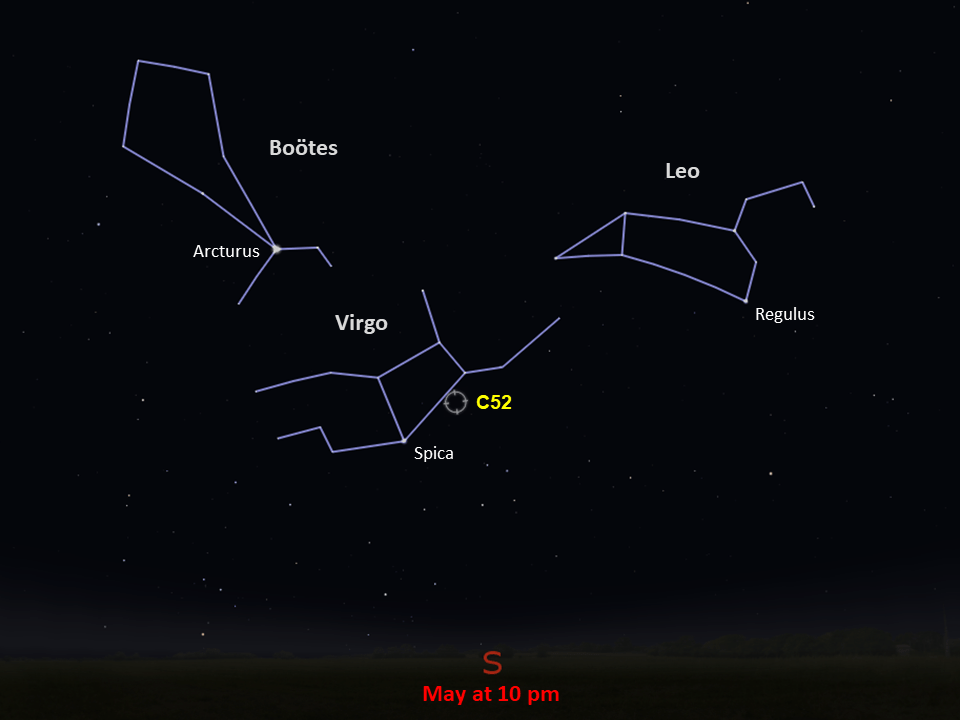Caldwell 52
Slightly larger than the Andromeda galaxy, this massive elliptical distorts its neighbors with its gravitational influence.
Distance
40 million light-years
Apparent Magnitude
10.9
constellation
Virgo
object type
Elliptical Galaxy
Located in the constellation Virgo, Caldwell 52 is the first Caldwell object (numerically) that resides in the southern celestial hemisphere (south of the celestial equator). This elliptical galaxy is visible from both the Northern and Southern hemispheres, appearing highest in the spring for northern observers and in autumn for southern observers. It lies roughly 40 million light-years from Earth and has an apparent magnitude of 10.9. The galaxy’s core can be spotted with a small telescope in a suburban sky. From a darker location, the galaxy appears as an elongated patch of fuzz.

This image is a mosaic created using several infrared and visible-light observations made by Hubble’s Advanced Camera for Surveys. Astronomers used these observations to detect globular star clusters within the galaxy, which appear as star-like specks throughout the image.
Glossary
Apparent Magnitude - The brightness of an astronomical object as seen from Earth, influenced by the object's distance from Earth, its absolute magnitude, and even gas and dust that lie between the object and Earth.
Elliptical Galaxy - A nearly featureless, spherical or football-shaped galaxy, typically lacking new star formation and often containing much older stars than those in spiral galaxies.
Globular Cluster - A spherical group of stars that are gravitationally bound to each other, with most of the stars concentrated at the cluster’s center.
Supermassive Black Hole - A black hole millions or billions of times more massive than the Sun, typically residing at the center of a large galaxy.
Explore Hubble's Caldwell Catalog
The following pages contain some of Hubble’s best images of Caldwell objects.

Also known as NGC 188, this group of stars formed from a large cloud of gas making the stars roughly…

This shell of gas is expanding outward, away from the dying star within.

This barred spiral galaxy was first spotted by British astronomer William Herschel in April 1793 in the constellation Draco.































